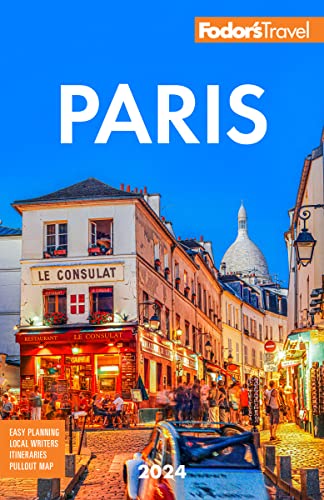Artists, Writers, and Exiles in Paris
Paris became a magnet for the international avant-garde in the mid-1800s and remained Europe's creative capital until the 1950s. It all began south of Montmartre, when Romantics, including writers Charles Baudelaire and George Sand (with her lover, Polish composer Frédéric Chopin), moved into the streets below Boulevard de Clichy. Impressionist painters Claude Monet, Edouard Manet, and Mary Cassatt had studios here, near Gare St-Lazare, so they could commute to the countryside. In the 1880s the neighborhood dance halls had a new attraction: the cancan, and in 1889 the Moulin Rouge cabaret was opened.
The artistic maelstrom continued through the Belle Époque and beyond. In the early 1900s Picasso and Braque launched Cubism from a ramshackle hillside studio, the Bateau-Lavoir, and a similar beehive of activity was established at the south end of the city in a curious studio building called La Ruche (the beehive, at the Convention métro stop). Artists from different disciplines worked together on experimental productions. In 1917 the modernist ballet Parade hit the stage, danced by impresario Sergei Diaghilev's Ballets Russes, with music by Erik Satie and costumes by Picasso—everyone involved was hauled off to court, accused of being cultural anarchists.
World War I shattered this creative frenzy, and when peace returned, the artists had moved. The narrow streets of Montparnasse had old buildings suitable for studios, and the area hummed with a wide, new, café-filled boulevard. At 27 rue Fleurus, Gertrude Stein held court with her partner, Alice B. Toklas. Picasso drew admirers to La Rotonde, and F. Scott Fitzgerald drank at the now-defunct Dingo.
The Spanish Civil War and World War II brought an end to carefree Montparnasse. But the literati reconvened in St-Germain-des-Prés. Café de Flore and Deux Magots had long been popular with an alternative crowd. Expat writers Samuel Beckett and Richard Wright joined existentialists Jean-Paul Sartre, Simone de Beauvoir, and Albert Camus in the neighborhood, drawn into the orbit of literary magazines and publishing houses.
Although Paris can no longer claim to be the epicenter of Western artistic innovation, pockets of outrageous creativity still bubble up. The galleries on Rue Louise Weiss in Tolbiac and the open-studio weekends in Belleville and Oberkampf, for instance, reveal the city's continuing artistic spirit; and the Ménilmontant district, where past arts icons rest in peace at the Père-Lachaise Cemetery, is considered a new mecca for creative souls.




